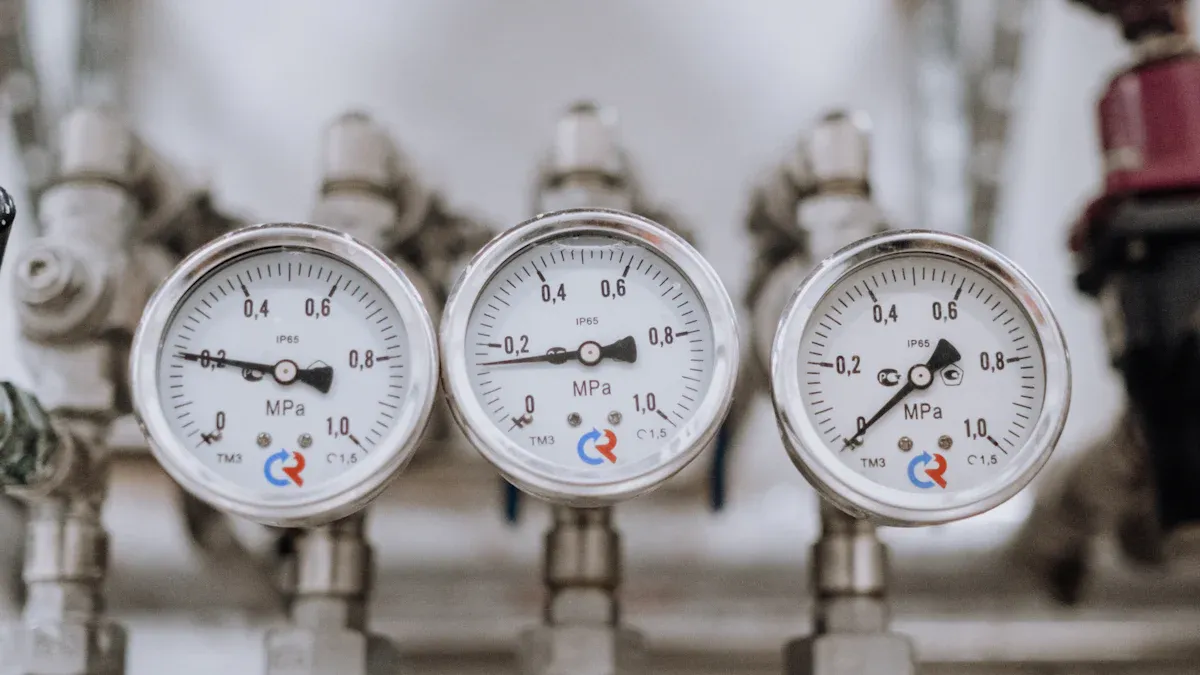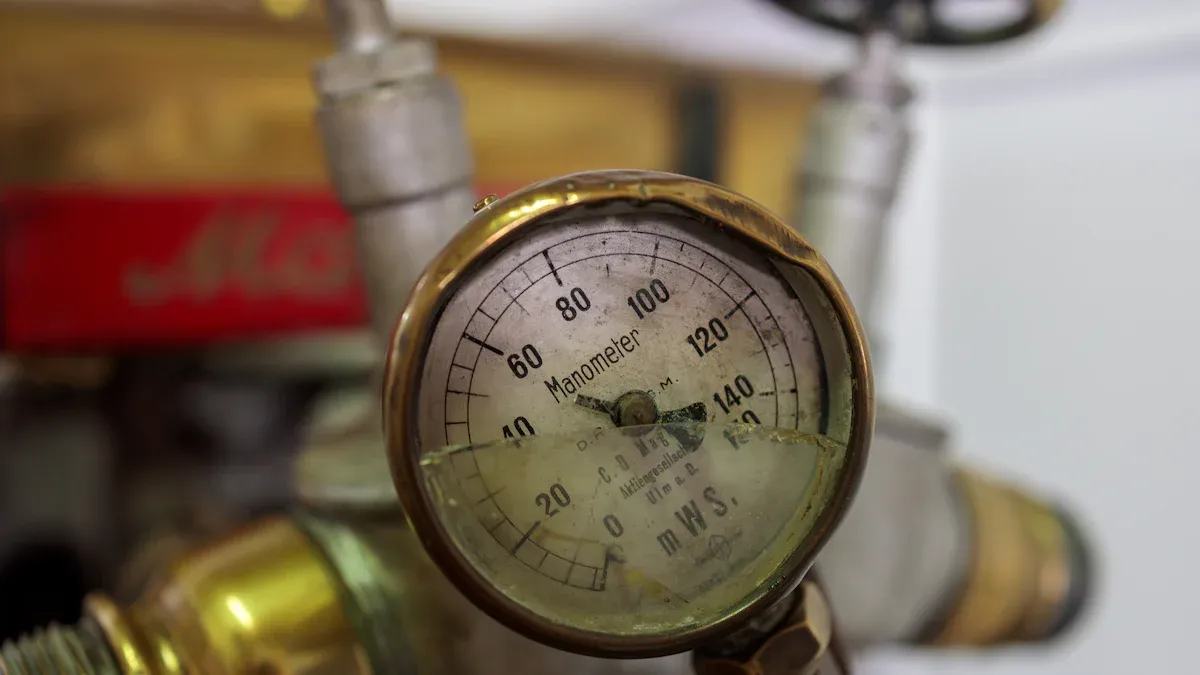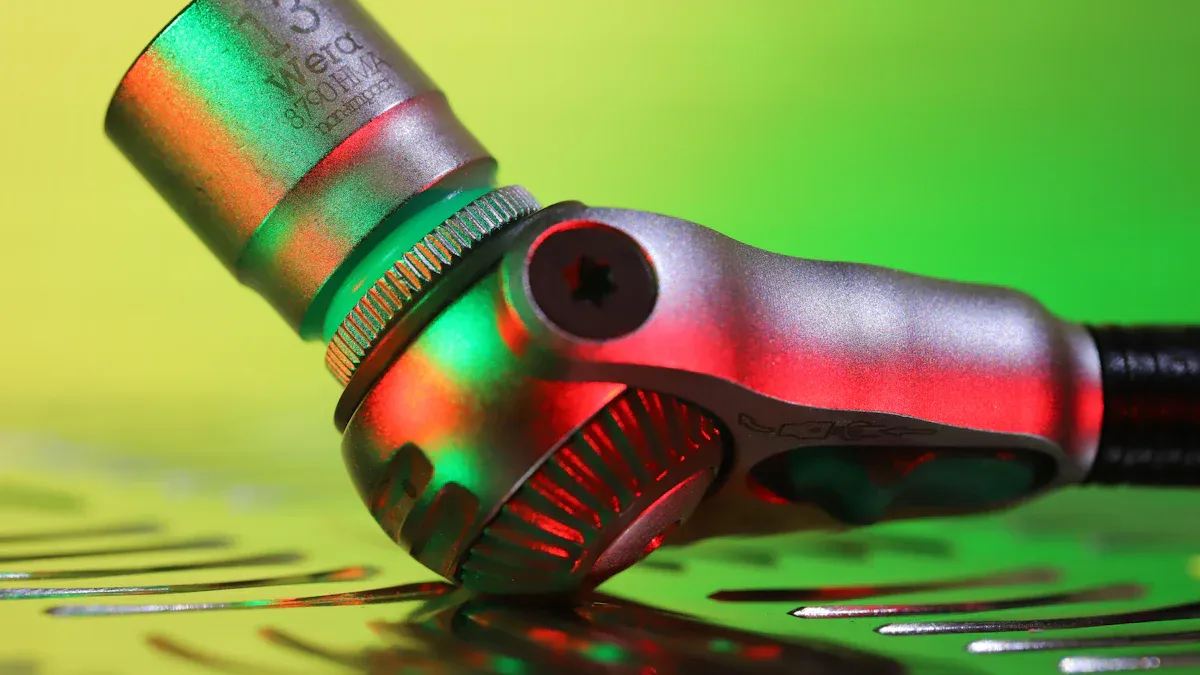
Tire tread depth is very important for vehicle safety. It affects how well your car grips the road, especially when it’s wet. Measuring tire tread depth accurately helps you take care of your tires. You can use laser tools or mechanical tools for this job. Each method has its own benefits and challenges. Knowing these differences can improve your driving experience and keep you safe.
Key Takeaways
Measuring tire tread depth accurately is very important for safety. Checking regularly can stop accidents and help driving.
Laser tools are very accurate and do not touch the tire. This makes them faster and less likely to harm tires than mechanical tools.
Mechanical tools cost less but need skilled users. If they are not lined up right, they can give wrong readings, especially when wet.
For managing fleets, using laser sensors can save time. They also lower the chance of tire accidents, making things safer overall.
Checking tread depth often can make tires last longer and keep you safe. Try to have a minimum tread depth of 4/32 inches for the best performance.
MEASUREMENT PRINCIPLES

LASER TIRE MEASUREMENT
Laser tire measurement uses special technology to check tire tread depth. This method uses laser sensors that send light beams onto the tire. The sensors measure how long it takes for the light to come back. This helps to get accurate tread depth measurements.
One big benefit of laser measurement is that it is non-contact. You can check the tires without touching them, which helps prevent damage. Research shows that laser measurement can be very accurate, with errors less than 0.2 mm. This accuracy is important for keeping your tires safe and working well on the road.
MECHANICAL TIRE TOOLS
Mechanical tire tools, like tire tread gauges, have been around for a long time. These tools usually have a metal or plastic gauge that you put into the tread grooves. You then read the depth directly from the tool. While this method is simple, it has some downsides.
Mechanical tools often rely on how a person uses them, which can cause measurement mistakes. For example, if you do not place the gauge right, you might get wrong results. Also, these tools can be slower than laser technology. They need to touch the tire, which can cause wear and tear over time.
ADVANTAGES & DISADVANTAGES
LASER TOOL BENEFITS
Laser tools have many good points for measuring tire tread depth. Here are some main benefits:
High Accuracy: Laser sensors give exact measurements. They often have an error margin of less than 0.2 mm. This accuracy is very important for your tires to work well on the road.
Non-Contact Measurement: You can check tread depth without touching the tire. This helps avoid any damage to the tire surface during the check.
Speed and Efficiency: Laser tools can quickly scan different spots on the tire. This makes inspections faster. This speed is especially helpful for fleet management, where time is valuable.
Environmental Adaptability: Laser tools stay accurate in different weather conditions. However, you need to calibrate them right. Things like temperature and humidity can change how they work.
MECHANICAL TOOL LIMITATIONS
Mechanical tools have been used for tire tread depth measurement for a long time, but they have some clear downsides:
User Dependency: The accuracy of mechanical tools depends on how you use them. If you misalign or place them wrong, you can get wrong readings.
Contact Measurement: These tools need to touch the tire, which can cause wear over time. This contact can also bring dirt or debris into the tread grooves, which affects the inspection quality.
Slower Process: Measuring tread depth with mechanical tools takes more time. You must put the gauge into each groove and read the measurement yourself, which can be boring.
Maintenance and Costs: Mechanical tools are usually cheaper, costing between $2 and $15. But they need regular checks to stay accurate. On the other hand, laser tools cost more (from $200 to over $1000) and may need more complicated maintenance, like calibration and software updates.
Here’s a quick comparison of the maintenance needs and costs for both types of tools:
Tool Type | Cost Range | Maintenance Requirements |
|---|---|---|
Mechanical Tools | $2 to $15 | Easy to use, usually needs little maintenance. |
Laser Tools | $200 to $1000+ | Needs special devices, may require manual data entry, more complex maintenance. |
ACCURACY COMPARISON

DRY CONDITIONS
In dry weather, both laser sensors and mechanical tools work well, but they have different strengths. Laser tools are very accurate. They give exact measurements of tire tread depth without touching the tire. This non-contact method lets you quickly check many spots on the tire. The speed of laser sensors helps you finish inspections faster, which is important for fleet management.
Mechanical tools can also give good results. But their accuracy depends a lot on how you use them. If you do not align the gauge correctly, you might get wrong readings. This reliance on the user can cause differences in your measurements. In dry weather, mechanical tools may be okay, but they do not have the same precision as laser sensors.
WET CONDITIONS
When it rains, how these tools work changes a lot. Wet weather can affect how accurate both methods are. Laser sensors can still work well, but you need to make sure they are set up right. Water on the tire can sometimes block the laser beams, causing small mistakes. However, if you take care of your laser tools, they can still give reliable measurements.
Mechanical tools have more problems in wet weather. Water can make the gauge slip or go off track, leading to wrong readings. Also, water can bring dirt and debris into the tread grooves, making the inspection harder. In these cases, the speed of laser sensors becomes even clearer. They can quickly adjust to the conditions without risking damage to the tire or getting false readings.
REAL-WORLD IMPACT ON TIRES
FLEET MANAGEMENT
Measuring tire tread depth accurately is very important for fleet management. You must check tire health often to avoid blowouts and wear. Here are some important points to think about:
A careful visual check helps find uneven wear.
The lowest tread depth is key for safety. Using average tread depth can cause dangerous problems.
Center tread wear shows overinflation, while shoulder wear means underinflation. Uneven wear can point to alignment issues, which affect how long tires last and when to replace them.
Checking tire tread depth regularly improves safety. Trucks with worn tires are three times more likely to have accidents, especially in bad weather. By using a digital Tire Pressure Monitoring System (TPMS), you can extend tread life by 15% and casing life for retreading by 20%. This smart approach saves money and keeps fleet operations running smoothly.
DRIVER SAFETY
For everyday drivers, checking tire tread depth accurately is crucial for safety. You should check your tires often to make sure they are safe. Here’s how accurate measurements can change your driving experience:
Feature | Laser Tools | Mechanical Tools |
|---|---|---|
Measurement Accuracy | Very precise, micron-level accuracy | Less accurate, can have human error |
Measurement Method | Non-contact | Contact-based |
Real-time Monitoring | Yes, allows instant detection | No, needs tire removal |
Efficiency | High, cuts down inspection time | Lower, takes more time |
Error Reduction | Greatly reduces human error | Higher chance for mistakes |
Using laser sensors to measure tire tread depth greatly lowers the chance of accidents. A study found a 58% drop in tire-related accidents thanks to tire tread sensors, including laser tools. Regular checks help you keep your tires safe, leading to a smoother and safer drive.
In conclusion, knowing the differences between laser and mechanical tools for measuring tire tread depth is very important for safety and efficiency.
Laser sensors give better accuracy and quicker results. They show detailed wear patterns and work without touching the tire, making them great for today’s needs.
Mechanical tools are cheaper but can have user mistakes and take longer to measure.
As technology gets better, we will see more use of AI and IoT in measuring tread depth. This will improve real-time data and help tires last longer.
Buying accurate measurement tools not only makes driving safer but also helps your vehicle perform better. The tool you choose can greatly affect your driving experience.
FAQ
What is the ideal tire tread depth for safety?
A tread depth of at least 2/32 inches is crucial for safe driving. However, many experts recommend replacing tires when tread depth reaches 4/32 inches, especially for wet conditions.
How often should I check my tire tread depth?
You should check your tire tread depth at least once a month. Regular checks help you catch wear early and maintain safe driving conditions.
Can I measure tire tread depth with a penny?
Yes! Insert a penny into the tread groove with Lincoln’s head facing down. If you see all of Lincoln’s head, your tread is too shallow, and it’s time to replace the tire.
Do laser tools require special training to use?
No, laser tools are user-friendly. Most come with clear instructions. You can quickly learn to operate them effectively without extensive training.
Are mechanical tools still useful for measuring tread depth?
Yes, mechanical tools can still be useful. They are inexpensive and easy to use. However, they may not provide the same accuracy as laser tools, especially in skilled hands.
See Also
Mastering Tire Tread Depth Gauges for Precise Measurements
Understanding Smart Tire Tread Depth Detectors and Their Function






